 If you like autumn, put your hands in the air!
If you like autumn, put your hands in the air!
 Fan Bingbing's "Queen style" in new play
Fan Bingbing's "Queen style" in new play
 Lingerie show at 2014 Miss China
Lingerie show at 2014 Miss China
 J-10 fighters show aerobatic stunts in smog-free sky
J-10 fighters show aerobatic stunts in smog-free sky
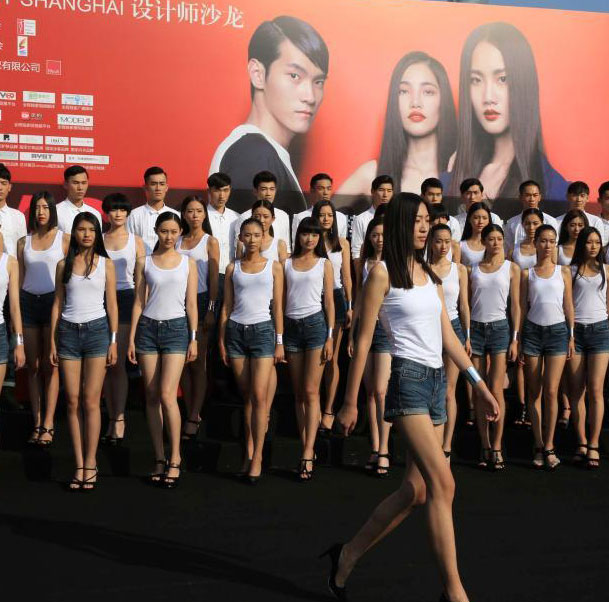 Charming contestants of Shanghai Int’l Model Contest
Charming contestants of Shanghai Int’l Model Contest
 Most amazing chi-pao beauties
Most amazing chi-pao beauties
 7 deadly animal attacks
7 deadly animal attacks
 Picturesque autumn scenery of Hongshan Army Horse Ranch
Russia to launch 70 Proton rockets by 2020: official
Picturesque autumn scenery of Hongshan Army Horse Ranch
Russia to launch 70 Proton rockets by 2020: official"It did surprise me a lot when I heard the news that they decided to officially end the life of the [Eiffel] bridge and send its rusted iron girders to the chopping block," said Fan Zhe, art director of the Sino-French Art Park in Shunde, Guangdong Province.
Though not as well-known as the world famous Eiffel Tower, the Eiffel Bridge, built in 1864 near the small southern French city of Bayonne, is still considered an outstanding feat of engineering for its time both for the techniques used and its aesthetic design. Designed by Gustave Eiffel (1832-1923), the bridge was a famous scenic spot for Bayonne despite years of disuse and disrepair before it was demolished in 2013.
"That's what motivated me to save those iron girders that were dismantled from the bridge," said Fan. "I wanted their lives to continue under the hands of 50 famous artists from both China and France at the Sino-French Art Park."
When these rusted relics infused with the cultural and historic nutrients of the Industrial Revolution landed in China, a place where the demolition of cultural relics that stand in the way of progress is no rare event, they set off an explosive chemical reaction throughout art circles in the nation.
All for one, one for all
A part of this year's 50th anniversary of the establishment of diplomatic relations between China and France, the art park covers 200,000 square meters of land.
Having lived in France for dozens of years, Fan is very opinionated when it comes to bringing art to public spaces.
"As a public art park, we must take local residents' needs and ability to appreciate art into account," Fan told the Global Times.
Despite these considerations, the park clearly has been influenced by Fan's personal ideas about art and society. Taking the theme "AA Utopia," the art park has attracted numerous top artists in the country.
In China, the term "AA" is roughly equivalent to the idea of "going Dutch" at a restaurant. Fan explained that in this case "AA Utopia" refers to the fact that the project was completed through the combined efforts of everyone involved and is not the work of a single individual.
Scheduled to open on November 20, the park's opening exhibition will consist of 50 artworks created from the iron material from the Eiffel Bridge by the project's 50 artists. Involving big-name artists like Wang Guangyi, Sui Jianguo and Xu Bing, the art works exhibit a large diversity of artistic styles, which according to Fan, was one of his major goals when building the art park.
"We have pop art, ironic art, and pioneering art. Combine that with the works from several French minimalist artists, and the artistic styles here are really varied and cover a wide range," explained Fan.
While minimalist art, also called minimal art, was hugely popular years ago, it is no longer as popular as it once was. Yet despite this decline Fan knew he wanted to bring this style to China.
"I want the public to know what minimal art, which originated in Europe, is. This [educating people] is the public function of art. Choosing to feature this art style may have meant we had to have less contemporary art, but we have to consider the needs of millions of potential visitors."
Bridge between eras
A major national, and even global, processing and distribution center, the local Shunde government's decision to establish this Sino-French Art Park has significant meaning.
"When the ruins of the Eiffel Bridge, which represent the Industrial Revolution, were transported to and rebuilt in Shunde, a modern global manufacturing and processing center, it was like a bridge was built connecting past and present," said Lu Mingjun, one of the curators for the opening exhibition.
Domestic artist Wang Du's work illustrates this connection perfectly. "The story (the dismantling of the Eiffel Bridge) happening in France reminds me of some of the stories here; that we frequently destroy cultural relics just to make new fake ones," Wang said at a press conference for the opening of the park on Wednesday in Beijing.
"Here the stories of the West and East are actually one story. The material of the bridge itself symbolizes this connection," said Wang.
Under Wang's skillful hands the pieces from the bridge are turned into an archaeological dig site where Eiffel's bridge has been unearthed in Shunde, transforming space-time by giving visitors the sense that this Western work has been rediscovered in the Far East.
Cultural chemistry
East and West, industry and urbanization, the chemical reaction sparked by these different combinations can be seen everywhere in the art park. In order for the rich connotations behind these art works could be fully understood by the public, Fan decided to invite three curators to divide the 50 art works into three themes.
"While this time China has decided to use discarded industrial materials from the West in the name of art, the recycling of materials from the West by developing countries is already a big industry," said one of the three curators, Hu Bin, whose topic for the opening exhibition is "The Memory, Remains and Turnover of Industry."
"We hope the distinctive industrial development of China and globalization can also be explored by art," said Hu.
Besides the fact that the iron beams the artists worked with came from one of Gustave Eiffel's early projects, the material the beams were made of was also something that attracted artists in China as "steel" and "iron" are words that held special significance during its Great Leap Forward (1958-61), a time when demand for increased steel production led every family in China to scour the country for every scrap of iron and steel they could find.
"Steel and iron are important symbols of certain historic and political events in Chinese history, especially revolutionary history," said Lu, whose topic is "Revolutionary Garden."
"The complicated connections between history and reality, culture and society, and art and politics are something that people today should reflect upon," said Lu.
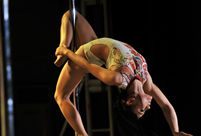 World Pole Dance Championship in China
World Pole Dance Championship in China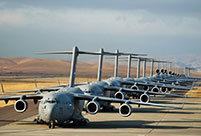 U.S. air force transport planes row up on base
U.S. air force transport planes row up on base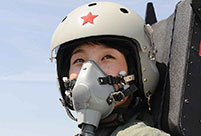 Post-85s female pilots and their mission
Post-85s female pilots and their mission Century-old public bath closes door in Beijing
Century-old public bath closes door in Beijing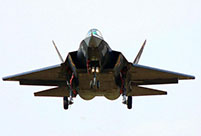 Shocking! Photos of Chinese fighters revealed
Shocking! Photos of Chinese fighters revealed Images of angels in white: At work v.s off work
Images of angels in white: At work v.s off work  Standard faces for each countries in the world
Standard faces for each countries in the world Netizens fall in love with champion swimmer Ning Zetao
Netizens fall in love with champion swimmer Ning Zetao Vibrant 21-year-old and her own Cheongsam brand
Vibrant 21-year-old and her own Cheongsam brand Top 10 most dangerous jobs in the world
Top 10 most dangerous jobs in the world  Top 10 fifth generation jet fighters in the world
Top 10 fifth generation jet fighters in the world Top 10 Chinese goddesses
Top 10 Chinese goddesses  Top 20 hottest women in the world in 2014
Top 20 hottest women in the world in 2014 Top 10 pure beauties in showbiz
Top 10 pure beauties in showbiz  Top 10 world's highest-paid models 2014
Top 10 world's highest-paid models 2014 The most gorgeous Chinese women
The most gorgeous Chinese women Top 10 most handsome faces in Asia
Top 10 most handsome faces in AsiaDay|Week|Month